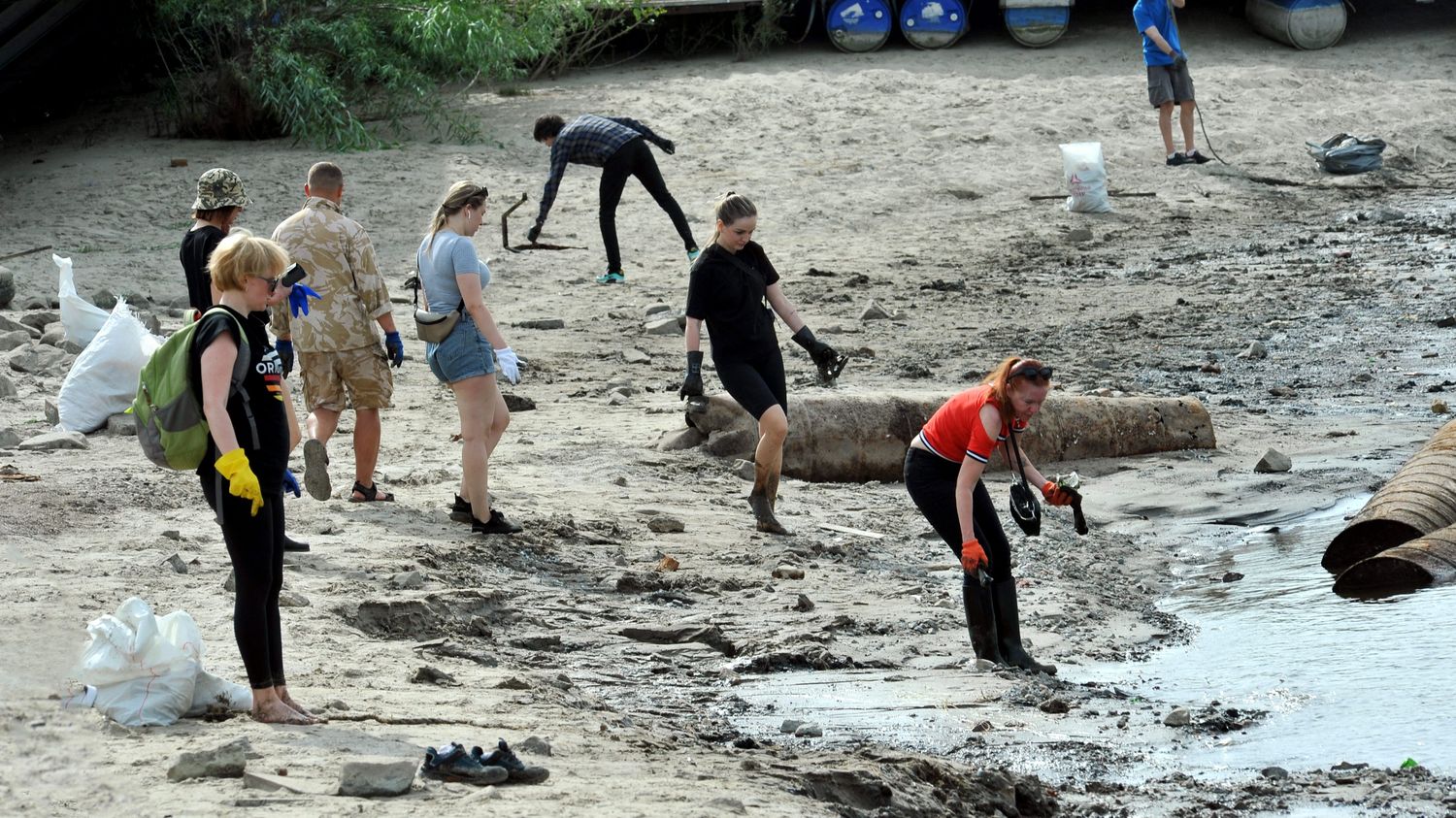The environmental damage following the destruction of the Kahovka dam in southern Ukraine is immense. Proliferation of green algae, chemical fertilizers swept away by the waters, an entire ecosystem that is in danger.
Posted
Reading time : 2 min.

“The worst environmental disaster in Europe since Chernobyl”. It is with these words that the Ukrainian authorities describe the consequences of the destruction, in Ukraine, of the Kakhovka hydroelectric dam on the Dnieper river, in the south of the country. kyiv and Moscow continue to accuse each other of having caused this disaster, which killed several dozen people. Today, the pollution has even ended up reaching the Black Sea.
>>> BEFORE/AFTER. War in Ukraine: Discover the extent of the destruction of the Kakhovka dam and its consequences
This pollution is explained by the direct proximity of the dam due to garbage, waste water, but also fuels. Three regions are concerned: Kherson, Zaporijjia and Dnipro. Thousands of people are deprived of drinking water. Residents are also prohibited from fishing and bathing.
Downstream of the dam, the major pollution observed by specialists concerns nitrates. In this very agricultural region, these chemical fertilizers have been swept by the waters into the Black Sea. “As of June 17, polluted waters reached the mouth of the Danube”, explains Pavlo Boulanovicth, head of the environment department of the Odessa region. “Today, 7,000 square kilometers of the northwestern part of the Black Sea are polluted.”
Green algae destroy the ecosystem
There is also a proliferation of green algae, favored by larger volumes of fresh water than usual, and high temperatures. “These algae are toxic”, explains Pavlo Boulanovicth. “They take all the oxygen from the water which can lead to the destruction of biological resources and therefore compromise the food supply of fish.”
The fish would thus be moving to ensure their survival. A species endemic to the Dnieper basin is also said to be endangered. For Natalia Gozak, from the Ukrainian NGO Eco-Action, an entire ecosystem is in danger and this could affect the Romanian and Bulgarian coasts. “The level of the dam continues to drop and the monitoring that is done is only carried out on the shores, on the shores of the Black Sea. I think that when we have the possibility of doing more in-depth analyses, the results will be different.”
The consequences in the Black Sea are still unsuspected. According to the Ukrainian hydrometeorological center, a month after its destruction, the Kakhovka reservoir was three-quarters empty. According to the authorities, agriculture in the south of the country would be in danger for decades.
